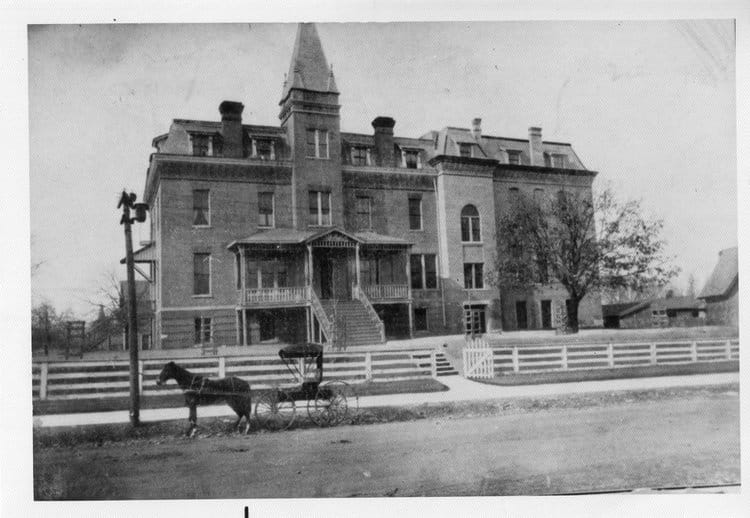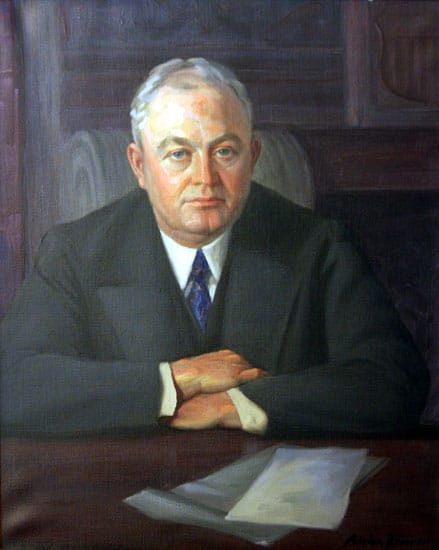

Uh oh...
It appears that you're using a severely outdated version of Safari on Windows. Many features won't work correctly, and functionality can't be guaranteed. Please try viewing this website in Edge, Mozilla, Chrome, or another modern browser. Sorry for any inconvenience this may have caused!
Read More about this safari issue.

This month in Arkansas history we get to celebrate the birthday of a river for the nation and a college that has helped tens of thousands of students through the years. There’s also the tale of Arkansas’ first duel and another solemn anniversary. Read on to learn a bit about what this month in Arkansas history is all about.

The Buffalo Flows
The Buffalo National River was designated by Richard Nixon on March 1, 1972, making it the first river in the country to receive national river status.
The Buffalo National River encompasses 135 miles of the river’s 150-mile course, and the river is one of the few free-flowing rivers remaining in the continental United States.
The river runs through Newton, Searcy, Marion and Baxter counties, and the declaration, in Public Law 92-237, put the river under the protection of the National Park Service. The day the designation was made was 100 years to the day after the establishment of Yellowstone National Park as the first national park.
The law says the national river was established “for the purposes of conserving and interpreting an area containing unique scenic and scientific features and preserving as a free-flowing stream an important segment of the Buffalo River in Arkansas for the benefit and enjoyment of present and future generations.”
The free-flowing status of the river was long a point of contention and debate, with talk of damming the Buffalo beginning after the passage of the Flood Control Act of 1938. A debate about dams on the river raged in the 1960s, with Gov. Orval Faubus telling the Army Corps of Engineers he did not support a dam on the Buffalo in 1965.
Arkansas’ congressional delegation first introduced legislation to establish a park around the river in 1967, with the final legislation introduced in 1971 and passed the next year.
Founding of Philander Smith College

Philander Smith College, the first historically black four-year college in Arkansas, was chartered by the state of Arkansas on March 3, 1881, though the school begins its history on Nov. 7, 1877, when Walden Seminary, a school to educate black ministers, was opened. Counting from then, 2017 marks the 140th anniversary of the school, which was renamed Philander Smith College after receiving a $10,500 donation from Smith’s widow.
The first degrees were given in 1888. The school remains the largest historically black four-year college in the state, and counts among its graduates former U.S. surgeon general Dr. Joycelyn Elders; Lottie Shackleford, the first female mayor of Little Rock; and professional athletes Elijah Pitts and Hubert “Geese” Ausbie, among many others.
Arkansas’ First Duel
The first known duel that took place in Arkansas happened on March 10, 1820, and in retrospect, it was over a pretty ridiculous argument.
Robert Oden owned a sword-cane, which William Allen was fascinated with, as any of us would be. But after taking a closer look at the cane, Allen refused to return the sword to its owner, even childishly running away and forcing Oden to chase him.
A challenge was given and accepted, and Allen was killed.
Westside Middle School Shooting

If you lived in Arkansas at the time, you surely remember the shooting that took place at Westside Middle School near Jonesboro on March 24, 1998.
Andrew Golden and Mitchell Johnson shot at students and teachers at the school after Golden, who was 11 at the time, pulled the fire alarm so students and teachers would exit the building. They fired 30 rounds at the students and teachers, killing sixth-grade teacher Shannon Wright and four students. Ten others were injured.
The boys were both found guilty of capital murder, but could not be charged as adults because of their youth. Both were released from the custody of the Department of Youth Services when they turned 21. The case was instrumental in the state passing Act 1192 of 1999, which allows children under the age of 14 to be charged as adults for capital murder and first-degree murder charges.
Sister Rosetta Tharpe

Photo courtesy of PBS documentary about Tharpe.
One of the superstars of Arkansas music history, Sister Rosetta Tharpe, was born March 20, 1915, in Cotton Plant. Her mother was an evangelist, singer and mandolin player, and she began performing at age 4, playing guitar and singing.
She performed regularly with her mother from the age of 6, and her unique style with the guitar was influenced by her mother’s mandolin playing. At the time few African-American women played the guitar, maybe none so well as she did.
She and her mother performed in Chicago in the late 1920s, and she moved to New York on her own in the mid-1930s. She would sign with Decca Records in 1938 and played Carnegie Hall in December of that year.
Known for playing gospel and jazz, she also attempted blues and pop, and continued to perform until her death in 1973. Her music influenced Elvis Presley and Johnny Cash, among many others. She was put on a postage stamp in 1998 and featured on the PBS series American Masters in 2013. She is a member of the Arkansas Entertainers Hall of Fame.
More Births and Deaths

The first governor of Arkansas, James Sevier Conway, died March 3, 1855. He served from 1836 to 1840 and lived on a plantation in Lafayette County called Walnut Hill. He died there after falling ill from pneumonia early in the year and never regaining his health.
Thomas James Churchill, 13th governor of Arkansas, was born March 10, 1824, near Louisville, Ky. He moved to Little Rock in 1848 after serving in the Mexican War and was governor from 1881 to 1883.
The 21st governor, John Sebastian Little, was born March 14, 1851, in western Arkansas. He served less than a month of his term because of a physical and mental collapse that would plague him the rest of his life.
Thomas Jefferson Terral, our 27th governor, died March 9, 1946, and the 28th, John E. Martineu, died March 6, 1939.
We do the work.
You check your email.
Sign up for our weekly e-news.
Get stories sent straight to your inbox!









Like this story? Read more from Sarah White
For this month in Arkansas history, we celebrate the beginning of a large...
June is the month in Arkansas history in which we get to celebrate...
In this month in Arkansas history, we celebrate the birth of several...
Join the Conversation
Leave a Comment